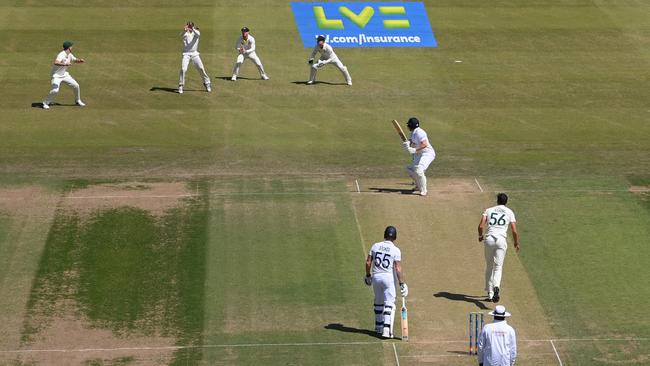
Just as well. For what follows may come as something of a shock – the result of research carried out by me and my monk working with medieval documents from his monastery.
I confided our discovery to my late friend Packer when he was planning his World Series Cricket – warning Kerry that what he was planning was heretical, an abomination in the face of our Lord’s. But would he listen? Nay. And God struck him down on the polo field.
God knows there are hints galore. The word “ashes” should take you to Ash Wednesday and the ritualistic smudge on the brow. The name Lord’s, blending with Lourdes, is another red flag. As is the red ball, the colour of the hurtled projectile – the colour of his satanic majesty the Devil.
Let me now decode cricket so that you and any hypothetical heretic have no wriggle room. The three stumps represent the Holy Trinity. The red ball symbolises Satan’s attempt to destroy the Catholic faith. The white clothing worn by the players has to do with virtue. And note how the number in the team echoes the number of Christ’s apostles. The twelfth man? Who else but Judas Iscariot?
For a connection between the Last Innings and the Last Supper, see Leonardo’s famous mural for a team picture. And what of the umpire in a cricket match? A theologian trying to keep up with developments and adjudicate on fine points and technical issues. Theologies were good at that sort of thing – having sorted out how many angels could dance on the head of a pin.
The game first became popular in monasteries during the Middle Ages with appeals against the light during the Dark Ages. Women’s cricket – played by nuns in remote convents – was disapproved of by many monks and mother superiors. It has only attracted a wide following in the 21st century.
Men’s cricket has always been fiercely competitive. During the times of Henry VIII, teams representing the Catholic Church would play his new C-of Es. History records that Henry was a bad loser and in the event of a defeat would resort to burning down another monastery.
To this day it is against the rules for an atheist to play the game, although blind eyes are turned towards agnostics. There are gates for “Gentlemen” versus players but no admission to Disbelievers, though it is possible that some sneak into the stands. And cricket has its saints: Saint Don of Bradman and Saint W G of Grace. Cricket followed the cross in the early days of British colonisation to remote places like India and Australia. A First XI was on the First Fleet.
Finally the bat – used by batsmen to defend the Holy Trinity of the stumps. After much scholarly discourse, I’ve concluded that the weaponised willow represents a piece of the One True Cross. Hosanna and Howzat!








Some weeks will have elapsed between the time I dictate these words to the faithful Capuchin monk who serves as my butler and amanuensis and their appearance in this august journal. By the time you read this epistle, “cricket tragic” politicians such as John Winston Howard and Mark Latham will have returned from watching these Test matches in the so-called “Ashes”.